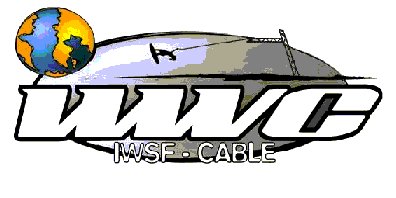

World
Cable Wakeboard
&
Cable Wakeskate
Rules
2003
Update 21th May 2003
TABLE OF CONTENTS
1. GENERAL
Unsportsmanlike conduct includes, but is not limited to: use of vulgar language in public, public tantrums, not riding to fullest potential, failure to attend designated functions or events, consuming alcoholic beverages during the competition, competing under false pretences, concealing significant injuries or health problems.
2. SAFETY
2.2 A first aid team must be on site for all WWC-sanctioned competitions
2.3 Rescue craft must be in suitable positions to assist injured riders
2.4 All participants ride at their own risk
2.5 Helmets must be worn to use sliders and/or kickers
3. ENTRY REQUIREMENTS
The best 6 scores will be taken for country classification. In case of equality will be taken the best 7 scores.
4. CATEGORIES / DIVISIONS
Boys
Age 14 and under - If a rider was born in the following years, then they qualify for this category:
1988 and after
Girls
Age 14 and under - If a rider was born in the following years, then they qualify for this category:
1988 and after
Junior Men
Age 15 to 18 - If a rider was born in the following years, then they qualify for this category:
1987 - 1986 - 1985 - 1984
Junior Ladies
Age 15 to 18 - If a rider was born in the following years, then they qualify for this category:
1987 - 1986 - 1985 - 1984
Open Men
No age restriction
Open Ladies
No age restriction
Masters - Men
30 years old and over: If a rider was
born in 1972 and before. .Masters - Ladies
30 years old and over: If a rider was
born in 1972 and before.Wakeskate - Men
No age restriction
Wakeskate - Ladies
No age restriction
5. HEAT SYSTEM / RUNNING ORDER

A simplified version is as follows:

6. COMPETITION AREA
7. TOW LINES
8. OBSTACLES
OFFICIAL RAINBOW SLIDER DIMENSIONS

Please don´t use PVC, but take PEHD ( High Pressure Water Tube) !
OFFICIAL KICKER DIMENSIONS

9. EQUIPMENT
10. FORMAT
11. JUDGING CRITERIA / SCORING
Execution = 33.3 points
(Level of mastery of tricks performed)
The judge’s look for the level of technical perfection of the maneuvers preformed, as well as the successful completion of the entire run
Intensity = 33.4 points
(Level of trick, how big, moves taken to their limit)
How impressive was the routine, how big did the rider go? The judges will look for the degree of effort in each maneuver performed and of the overall run
Composition = 33.3 points
(Variation of tricks, overall look of the run, smooth transition between moves)
The level of variety and creativity displayed by the rider. Judges are looking for variety and diversity of tricks in a flowing creative sequence. In the Judge’s eyes, a better Rider is one who performs a good balance of Air Tricks, Sliders/Obstacles, Spins, Heel Side, Toe Side, Switch, etc.
12. PROTESTS
13. SCHEDULE CHANGES
14. PRIZES
14.2 Product prizes may be awarded in each division, at the discretion of sponsors